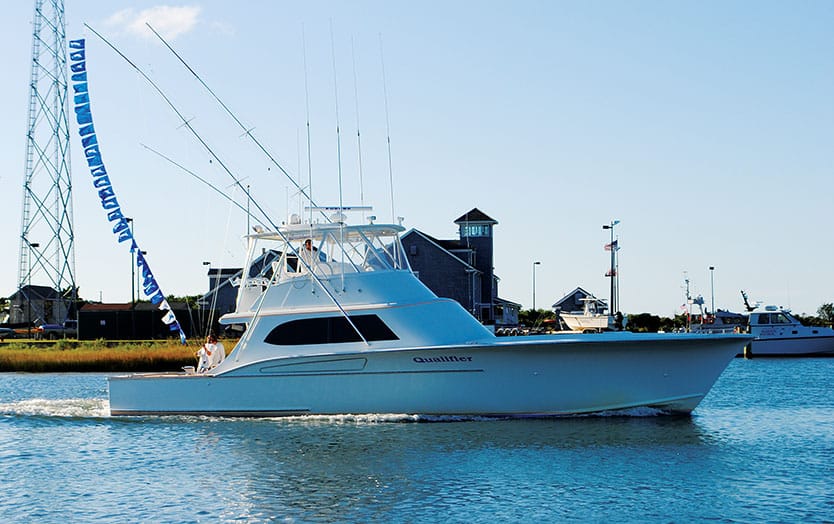
Show Your Colors
One of the things I look forward to most when traveling is seeing what the local traditions are for flying flags and how the mantra of catch-and-release fishing has evolved with their use. Karl Anderson’s column Fly ‘Em Right — Flag Protocol for Fishermen hit the nail on the head by stating that each location has its own way of doing things and also explained the general rule of thumb for flag use.
However, I think we should take it one step further and look at the role flags have played in conservation and how their use has spread with the increased awareness of catch-and-release fishing. While they are sometimes used in nontraditional manners in some locations, what should be looked at is the fact that crews around the world are using flags to show their success instead of stacking dead fish on the dock.
When it comes to conservation efforts for billfish, we could sit around and debate for hours about which tools have been the most influential over the years. Many would argue that circle hooks and their increased use have boosted the post-release survivability for billfish. Others might say longline closures in the Atlantic and Gulf of Mexico have been the greatest success because of the large reduction in billfish bycatch.
Although release flags would probably not be the first thing to come to mind in this debate, I would argue that these inexpensive pieces of nylon have become an iconic symbol with a tremendous impact on billfish conservation. I don’t know about you, but I would much rather see an outrigger full of release flags than a marlin hanging from the scale. Take a moment and give some thought as to what our fisheries would be like if every release flag you have seen flying on outriggers were instead a billfish lying on the dock.
Take the charter fleet in Los Cabos, Mexico, for example. On any given day, the fleet returns from fishing more decorated than a float in a Thanksgiving Day parade, with flags for every fish they caught, whether a billfish or a meat fish brought home for dinner. Although the display is borderline excessive, it serves its purpose well. As a world-class destination where livelihoods are based upon sport-fishing tourism, the ultimate goal is attracting both novice and seasoned anglers.
Rather than dead marlin hanging from scales, the release flag has thankfully filled the need for advertisements and provides the potential to attract new customers, as well as represents a source of fulfillment for customers that come back to the dock with only photos and memories of the billfish they released that day. In the Los Cabos region alone — where sport-fishing tourism is estimated to generate more than $1.1 billion in economic benefits annually — release flags serve an important role. If every flag that is flown was instead a striped marlin on the dock, I wonder how long this region would be classified as a top sport-fishing destination by anglers around the world.
Many people don’t understand why release flags are flown upside down. I’ve been at several tournaments where people walk up to the boats flying release flags naively wanting to know when the big fish are going to be weighed only to be let down when informed that the billfish were released. Long before catch-and-release for billfish became the norm and preceding the use of radios, fish flags were flown to indicate to the crews on the dock that the boat had a fish aboard. As catch-and-release fishing gained popularity — and as was indicated in Anderson’s column — flags flown for released billfish were distinguished from harvested fish by flying the flag upside down. Albeit counterintuitive to general thinking, it became the tradition and is widely practiced around the world, but there seems to be a shift in the norm, with many boats beginning to fly their flags right side up.
I have talked to several captains about what caused them to decide to fly their flags this way, and one explanation really set itself apart because it was not only simple but also profound. Capt. Fin Gaddy, who runs Qualifier out of Oregon Inlet, North Carolina, changed the way he flew his billfish flags around the time his twin 5-year-old boys, Charles and Brown, were born. Based upon the simple premise that even his young sons would understand, he said, “If you asked a kid to draw a picture of a dead dog, which way would they draw it? And how would they draw a living dog?” It doesn’t take much to see the rationale behind the purpose of flying his billfish release flags right side up.
The school of thought was similar for other crews flying their flags upright. They want it known that they take the extra couple of minutes to revive and release their fish so that it will swim away strong and upright. Certainly against what had become tradition and potentially shunned by some members of the sport-fishing community, this shift in thought signifies more than just catch-and-release becoming the norm. It shows how important it is for crews to pay extra attention to how fish are released to ensure that billfish will be caught again another day.
The next time you raise the release flags after a successful billfishing trip or see a boat coming into the inlet with a rigger full of release flags, think about the instrumental role release flags have played in billfish conservation. And the next time you or a mate fastens your flags to the rigger halyard, place them upright and let others know that you took the extra couple of minutes to release your billfish so that it could be caught again. The only thing prettier would be a red The Billfish Foundation tag flag flying beneath it.







